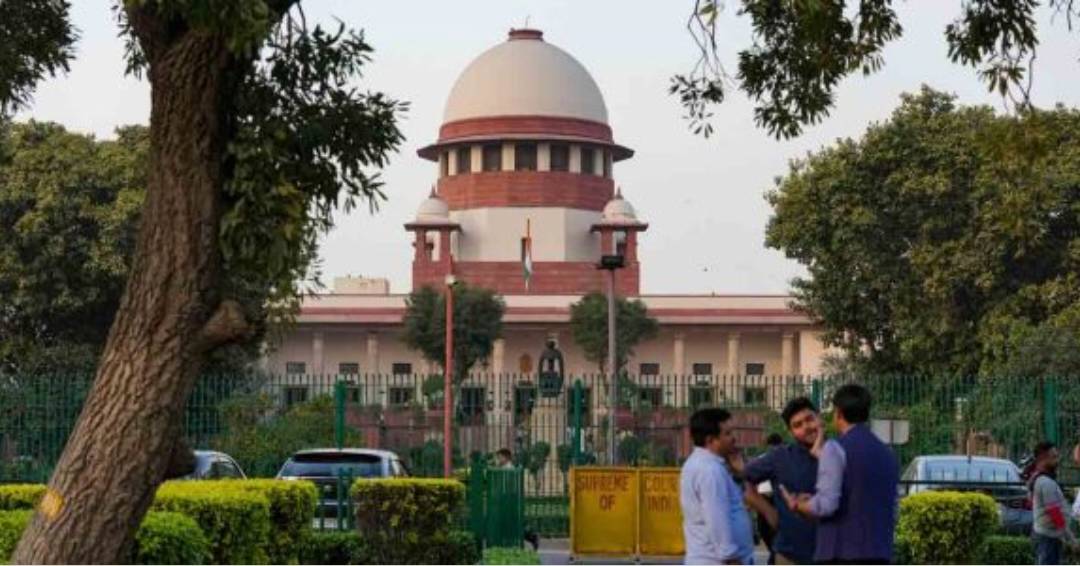
In a recent development, the Supreme Court underscored the importance of fostering harmony and mutual respect among different communities. In an effort to address the aftermath of communal riots and hate speeches, the Court proposed the creation of a committee. This committee, as suggested, would be formed under the jurisdiction of the Director General of Police (DGP) in Haryana. The primary objective of this committee would be to thoroughly review and evaluate cases that have emerged in the wake of the recent communal clashes in the state, which regrettably led to the loss of six lives.
The context for this proposition arose from a plea that revolved around the dissemination of hate speeches. These speeches were alarming for their blatant encouragement of violence against members of a specific community, along with calls for their social and economic boycott. These provocative speeches were reportedly made at rallies held in various states, including Haryana.
During the proceedings, a bench comprising of Justices Sanjiv Khanna and SVN Bhatti directed Additional Solicitor General K M Nataraj to provide insights and information regarding the proposed committee by the forthcoming date of August 18. The bench emphasized the significance of maintaining a sense of understanding and cooperation among different communities. It expressed concerns about the problem of hate speech and underscored the fact that no community should bear the brunt of such expressions.
In an attempt to address the issue at hand, the Court came up with the idea of establishing a committee. This committee, as envisaged by the Court, would comprise three or four officers who would be nominated by the Director General of Police. The committee would play a crucial role in assessing the authenticity of evidence and materials collected by station house officers. Based on their assessment, appropriate directions would be issued to the concerned police officers. The Court also highlighted the need for sensitivity training within the police force, especially at the station house officer and police officer levels.
Furthermore, the Supreme Court instructed journalist Shaheen Abdullah, the petitioner in this case, to compile all relevant material including videos. This material would then be submitted to the nodal officers designated in each state, in accordance with a prior judgment issued on October 21, 2022.
Additional Solicitor General K M Nataraj acknowledged that the Union of India also stands against hate speeches and recognizes the necessity of curbing them. He acknowledged that the current mechanism for addressing hate speech issues is not effectively operational in some areas.
The proceedings also witnessed senior advocate Kapil Sibal, who represented petitioner Shaheen Abdullah, assert the importance of safeguarding individuals against hate speeches. He stated that the vitriolic nature of such expressions cannot be allowed to persist unchecked. However, when the bench proposed the idea of the committee, Sibal expressed reservations about its efficacy. He argued that such a committee wouldn’t suffice in addressing situations where people are threatened or shops are targeted based on religious identity.
Sibal also highlighted a significant concern regarding the efficacy of FIRs (First Information Reports) registered against individuals responsible for hate speech. He argued that while FIRs are being lodged, the subsequent lack of arrests and prosecutions raises questions about the progress being made in tackling hate speech.
The Supreme Court has scheduled the next hearing on August 18, during which these concerns and propositions will be further deliberated upon.
The application filed by journalist Shaheen Abdullah referred to a previous order by the apex court, dated August 2. In this order, the Court expressed its hopes that state governments and law enforcement agencies would ensure that hate speeches targeting any community, regardless of identity, would not be tolerated. The Court also emphasized the deployment of adequate police or paramilitary forces whenever required, along with the use of surveillance measures like CCTV cameras in sensitive areas.
Despite this order, the application pointed out that over 27 rallies were organized across various states, wherein hate speeches continued to be delivered. The application contained a comprehensive table detailing rallies that took place between August 1, 2023, and August 7, along with relevant video links. One video highlighted a procession where warnings were issued to shopkeepers about employing Muslims, accompanied by threats of boycotting their shops.
Shaheen Abdullah’s application sought the intervention of key authorities including the Commissioner of Police in Delhi and the Director Generals of Police in Uttarakhand, Uttar Pradesh, and Haryana. The aim was to ensure appropriate actions are taken to prevent the occurrence of such rallies.
It’s important to note that the initial communal clashes took place in Nuh, Haryana, where a procession organized by the Vishva Hindu Parishad was attacked, leading to the unfortunate deaths of six individuals, including home guards and a cleric. These clashes subsequently spread to Gurugram and nearby areas.
In summary, the Supreme Court’s recent emphasis on harmony among communities and its proposal for a committee to address hate speech and communal clashes underscores the importance of maintaining peace and understanding within society. The Court’s efforts aim to address a pressing issue and ensure that hate speeches and divisive actions are curbed effectively. The proposed committee, if implemented effectively, could play a crucial role in mitigating such issues and promoting a more harmonious coexistence among different communities.

Post Your Comments